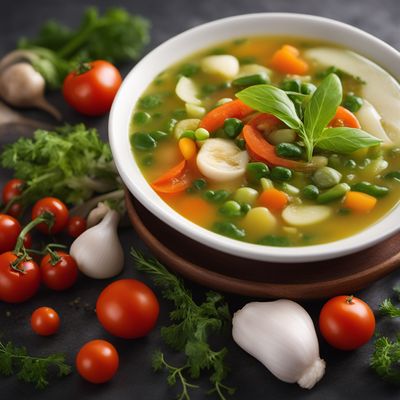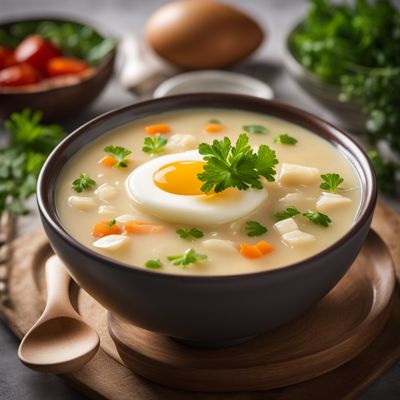
Ingredient
Soups (dry mixture uncooked)
Soup Mixes: A Convenient and Flavorful Meal Option
Dry soup mixes consist of a combination of dehydrated vegetables, legumes, grains, and seasonings. They come in a wide range of flavors and varieties, including vegetable, minestrone, lentil, and chicken noodle. These mixes are designed to be rehydrated with water or broth, making them a quick and easy meal option. They are often used as a base for homemade soups or as a pantry staple for busy individuals.
Origins and history
The concept of dry soup mixes originated in the early 20th century as a way to provide a convenient and nutritious meal option. They gained popularity during times of economic hardship, as they offered an affordable and filling option for families. Over the years, dry soup mixes have evolved to include a wide range of flavors and ingredients, catering to different dietary preferences and culinary traditions.
Nutritional information
The nutritional information of dry soup mixes can vary depending on the specific brand and ingredients. They generally provide a good source of dietary fiber, protein, and essential vitamins and minerals. However, it is important to check the label for any added preservatives, sodium, or artificial ingredients.
Allergens
Dry soup mixes may contain allergens such as wheat, soy, or dairy. It is important to read the ingredient list carefully and choose a mix that suits your dietary needs and restrictions.
How to select
When selecting dry soup mixes, read the ingredient list and choose a mix that aligns with your dietary preferences and restrictions. Look for mixes that contain natural, whole food ingredients and minimal added preservatives or artificial flavors. Consider opting for low-sodium or reduced-sodium options if you are watching your sodium intake.
Storage recommendations
To store dry soup mixes, keep them in a cool, dry place away from direct sunlight. Ensure that the packaging is tightly sealed to prevent moisture or pests from entering. Follow the instructions on the package for any specific storage recommendations.
How to produce
Dry soup mixes are produced by food manufacturers and are not typically produced at home. However, you can customize the flavor and ingredients of the soup by adding fresh vegetables, herbs, or protein sources like cooked chicken or beans.
Preparation tips
To prepare dry soup mixes, simply follow the instructions on the package. Most mixes require rehydration with water or broth and simmering for a specified amount of time. Feel free to customize the soup by adding additional vegetables, herbs, or spices to enhance the flavor. Serve the soup hot and enjoy!
Culinary uses
Dry soup mixes are commonly used to make homemade soups in a quick and convenient manner. They are a pantry staple for busy individuals or those looking for a comforting meal option. These mixes can be customized with additional ingredients to suit different tastes and dietary preferences.
Availability
Dry soup mixes are widely available in grocery stores, supermarkets, and online retailers. They can be found in the soup aisle or the bulk section of the store. Additionally, specialty stores or health food stores may offer a wider variety of soup mix options.
More ingredients from this category » Browse all

Mixed vegetables soup, dry
Hearty Veggie Medley

Onion soup, dry
The Savory Elixir: Unveiling the Delights of Dry Onion Soup

Tomato soup, dry
The Essence of Sun-Ripened Tomatoes in a Bowl

Meat/poultry soup, dry
The Hearty Broth Base

Potato soup, dry
The Comforting Elixir of Potatoes

Grains soup, dry
Hearty Comfort in a Bowl

Mushroom soup, dry
Savory Delights: Exploring the World of Dry Mushroom Soup

Dairy/egg soup, dry
Creamy Delights: Exploring the Versatility of Dry Dairy/Egg Soup

Fish soup, dry
Savory Delight: Exploring the World of Dry Fish Soup

Fruit soup, dry
The Delightful World of Dry Fruit Soup

Legume (beans) soup, dry
Hearty and Nourishing: Dry Legume Soup

Meat and vegetable soup, dry
A Hearty Bowl of Nourishment